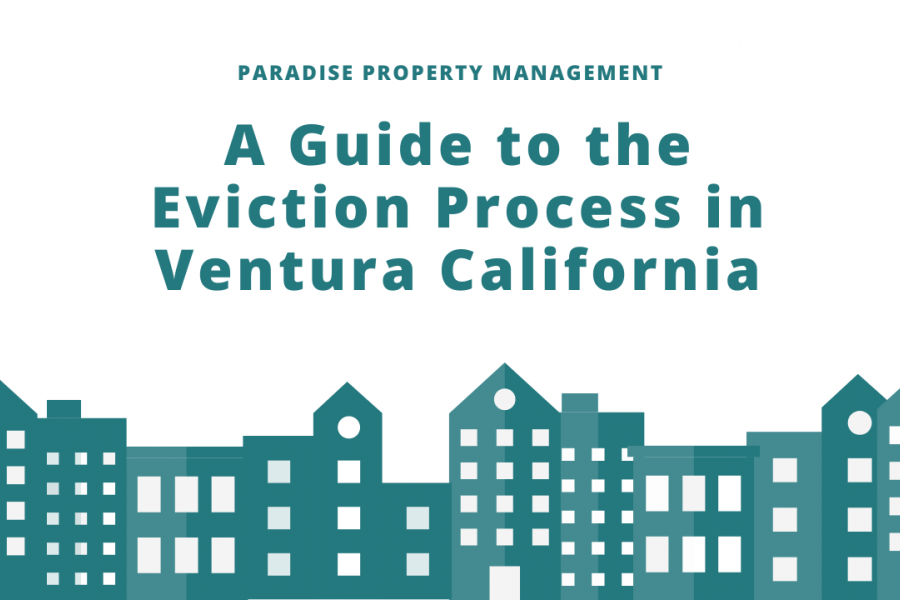
As a landlord, it’s never ideal to have to evict a tenant. However, sometimes situations arise that require this kind of action. Each state in the US has its own laws regarding how a landlord should handle the eviction process, and California is no different!
As a landlord, you may find yourself in an unfortunate circumstance requiring you to evict your tenant. Attempting to evict a tenant without a good understanding of the legal eviction process or Fair Housing Laws in California could result in tangible, legal consequences that no landlord wants.
So, if you’re curious about how to evict a tenant in California, keep reading our comprehensive guide.
Notice for Lease Termination and Legal Causes
As a landlord starting the lengthy California eviction process, the first question you should ask is: Under what circumstances can you evict a tenant? In California, there are various reasons a landlord may evict a tenant. You can proceed with evicting a tenant in California for:
- Failing to make their rent payments
- Failing to uphold their end of the lease agreement
- Engaging in illegal activity on the property
- Failing to perform their responsibilities as stated by the California Civil Code
- Staying on the property after the lease has ended after being given proper notice by the landlord

The type of eviction notice that a landlord gives their tenant depends on why the tenant is being evicted from the property.
Here are the following types of eviction notices:
Three-Day Notice to Quit or Pay Rent
This notice applies to tenants who fail to pay their rent on time.
30/60 Day Notice to Quit
This notice is for a tenant who stays on the property even after the lease has ended. The amount of notice the landlord must give depends on how often the rent is paid.
Three-Day Notice to Cure or Vacate
This notice is for fixable violations on the tenants’ end, allowing the tenant to correct their lease violations to avoid getting evicted. Examples of this include failing to keep the property clean or holding an unauthorized pet on the property.
Three-Day Unconditional Quit Notice
This type of notice is for incurable offenses. These violations include illegal activity and excessive damage to the rental home.
Serving a Tenant With an Eviction Notice
What are your next steps once you have a valid reason to evict your tenant? Well, if a landlord wishes to evict a tenant for a valid reason, they must provide notice. But what are the regulations regarding these notices?

The landlord may present the tenant with an eviction notice in one of three ways. They can:
- Deliver the notice to the tenant in person
- Leave the notice with another tenant over 18 years of age, in addition to mailing a copy to the property
- Mail the notice to the property if the notice is ending a month-to-month tenancy with a 30 to 60-day notice to quit
Attending the Court Hearing
If the tenant stays on the rental property after the notice period has ended the landlord can file a Summons and Complaint with the court. The Summons and Complaint must be served to the tenant within 60 days of the landlord filing the complaint.
The case may be dismissed if it is not served in this time. The Summons and Complaint may be served by anyone 18 years of age or older who is not part of the case. Typically, this person is a sheriff, marshall, or another legal professional.
The Summons and Complaint may be served in one of three ways in California:
- Presenting a copy of the complaint to the tenant in person
- Leaving a copy of the complaint with the tenant’s manager at their place of work and mailing a copy to the rental home
- Posting the summons and complaint in an easily noticed place at the rental home

Per California eviction laws, once the tenant receives the Summons and Complaint, they may file an answer with the court. If they choose to do this, then a hearing will be scheduled.
When preparing to attend the court hearing, the landlord and tenant should bring a copy of the lease agreement, the initial eviction notice given to the tenant, the complaint, and any evidence to help their case.
Writ of Execution
A judge will issue a Writ of Execution if they rule in favor of the landlord, continuing the eviction process.
A Writ of Execution is the final notice given to the tenant to vacate the rental home and remove their belongings. The landlord must ask the court to issue the Writ of Execution if the court rules in their favor.
Returning the Possession of the Rental Home to the Landlord
After being served the Writ of Execution, tenants have five days to move out of the rental home with their belongings. If the tenant fails to do this within the allotted time, the sheriff will return to the property and forcibly remove the tenant.
Bottom Line
Now you have everything you need to know about the eviction process in California! If you have questions about your rental property, contact Paradise Property Management today!
Our team can help you and your rental property succeed. Whether you want more information on California’s complex Landlord-Tenant Laws or need someone to take on your workload, we are here for you!
Disclaimer: This blog should not be used as a substitute for legal advice from a licensed attorney in your state. Laws change, and this post might not be updated at the time of your reading. Please contact us for any questions you have in regards to this content or any other aspect of your property management needs.
